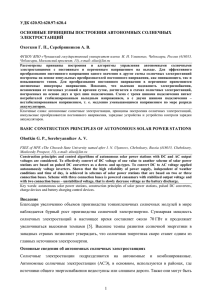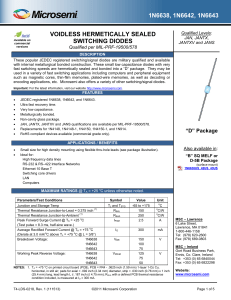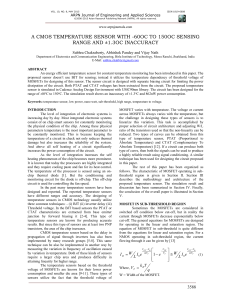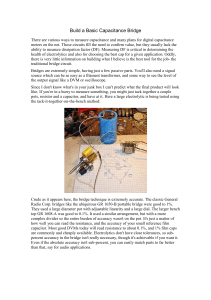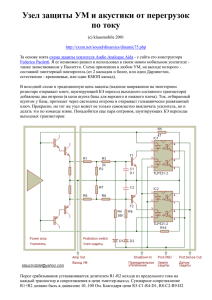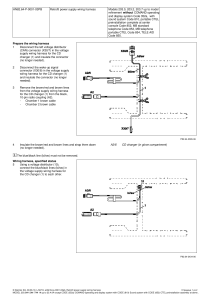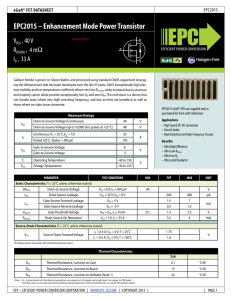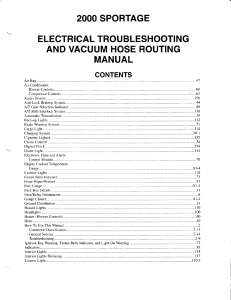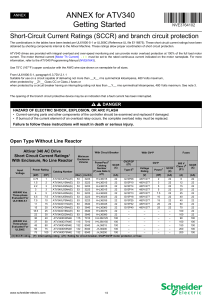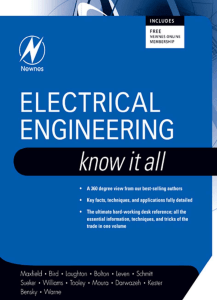умк
реклама
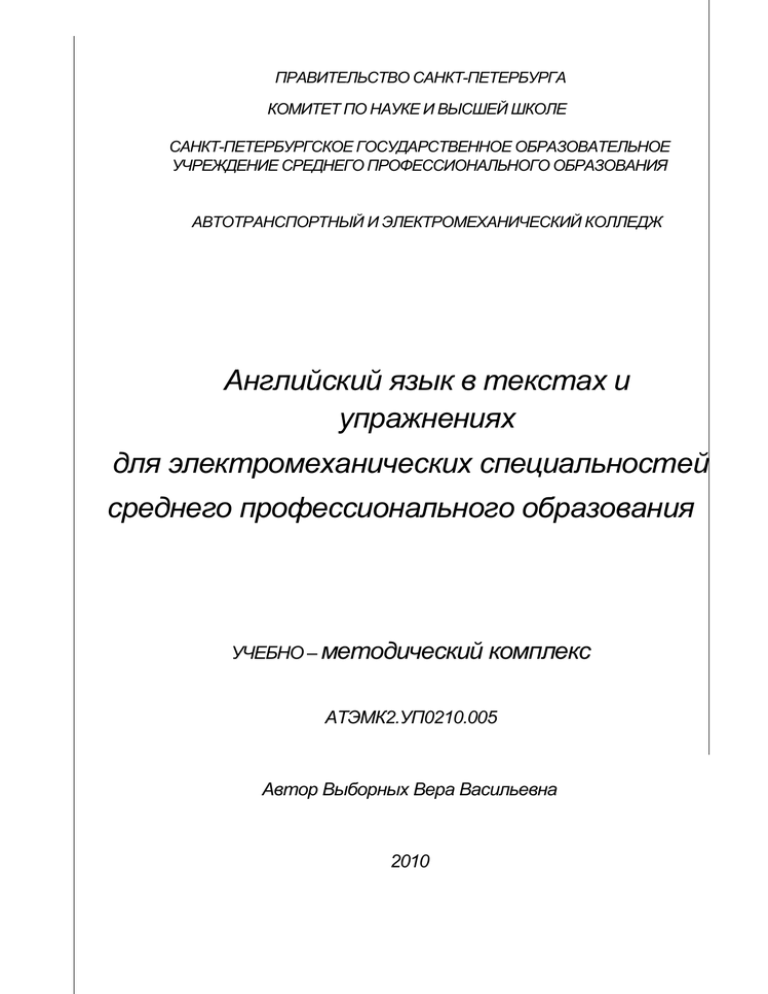
ПРАВИТЕЛЬСТВО САНКТ-ПЕТЕРБУРГА КОМИТЕТ ПО НАУКЕ И ВЫСШЕЙ ШКОЛЕ САНКТ-ПЕТЕРБУРГСКОЕ ГОСУДАРСТВЕННОЕ ОБРАЗОВАТЕЛЬНОЕ УЧРЕЖДЕНИЕ СРЕДНЕГО ПРОФЕССИОНАЛЬНОГО ОБРАЗОВАНИЯ АВТОТРАНСПОРТНЫЙ И ЭЛЕКТРОМЕХАНИЧЕСКИЙ КОЛЛЕДЖ Английский язык в текстах и упражнениях для электромеханических специальностей среднего профессионального образования УЧЕБНО – методический комплекс АТЭМК2.УП0210.005 Автор Выборных Вера Васильевна 2010 Пояснительная записка Учебное пособие по предмету «Английский язык» выполнено преподавателем Выборных В. В. на тему «Английский язык в текстах и упражнениях для электромеханических специальностей». Наличие переводов и готовых ответов облегчает работу преподавателей английского языка, не имеющих специальной технической подготовки, по проверке знаний студентов. Пособие адресовано преподавателям и студентам, самостоятельно изучающим английский язык с техническим уклоном. РЕЦЕНЗИЯ на учебное пособие преподавателя английского языка АТЭМК Выборных Веры Васильевны «Английский язык в текстах и упражнениях для электромеханических специальностей» Актуальность представленной на рецензию работы очевидна. При современных требованиях к обучению студентов по техническим специальностям все большее внимание уделяется работе с техническими текстами. Для проверки качества знаний студентов используются тесты, задачи, а также вопросы к тексту. В данном пособии приведены переводы, ответы и решения, что призвано облегчить работу преподавателя. Предназначено для всех преподавателей английского языка, работающих с группами 4 курса отделения ДЭМ, а также может быть полезно для студентов, самостоятельно изучающих английский язык с техническим уклоном Преподаватель английского языка АТЭМК ……Емельянова Е.В. Lesson 1 ELECTRIC CIRCUIT circuit compare resistor difference voltage source pass through conductor no (current) consist of a short reduce an open supply trouble connect result in, from This is a circuit. Its elements are a voltage source, a resistor and a conductor. The circuit consists of a voltage source, a resistor and a conductor. A voltage source supplies current. A resistor reduces current. A conductor connects the elements of the circuit. Compare circuit "a" with circuit "b". What is the difference between them? Current passes through circuit "a" while no current passes through circuit* "b". Circuit "b" has an open; No current through circuit "b" results from an open. An open and a short are troubles in a circuit. A trouble in a circuit may result in no current in it. Электрическая цепь Это цепь. Её элементами являются источник питания, сопротивление и проводник. Цепь состоит из источника питания, сопротивления и проводника. Источник питания производит ток. Сопротивление уменьшает ток. Проводник соединяет элементы цепи. Сравните цепь «а» с цепью «б». В чем разница между ними? Через цепь «а» ток проходит, в то время как в цепи «б» тока нет. Цепь «б» разорвана. В цепи «б» нет тока из-за разрыва. Разрыв и короткое замыкание – это поломки в цепи. Поломка в цепи может привести к отсутствию в ней тока. EXERCISES A Find the correct variant. Remember it: 1) circuit "a" consists of a) resistors and conductors b) a voltage source and resistors c) a voltage source, a resistor and a conductor 2) a voltage source a) conducts current b) reduces current r) supplies current 3) a conductor a) connects the elements b) supplies voltage c) conducts current 4) a resistor a) connects the elements b) supplies current c) reduces current 5) no current results from a) an open b) a short B Answer the following questions: 1. 'What elements does a circuit consist of? 2. What is the function of a voltage source? 3. What is the function of a conductor? 4. What is the function of a resistor? 5. When is there no current in a circuit? 6. What does an open or a short result in? 7. What does no current in a circuit result from? C Solve the following problems: 1. How much is the current in the circuit if a 60-volt source is connected to a resistance of t, 600 ohms? 2. How much is the voltage in a circuit having a current equal to 25 amp, if a 25-ohm resistance is connected to it? 3. A 70.35-ohm resistance is connected to the circuit. How much is the voltage if the current is equal to 4.5 amp? Ответы и решения A 1-е; 2-е; 3-a; 4-c; 5-a,b. В 1. 2. 3. 4. 5. 6. 7. The circuit consists of a voltage source, a resistor and a conductor. A voltage source supplies current. A conductor connects the elements. A resistor reduces current. No current results from an open and a short. An open and a short may result in no current. см. 5 C 1. 60: 1,600 = 0.037amp 2. 25x25 = 625V 3. 70.35x4.5 = 316.575 V Lesson 2 SERIES CIRCUIT AND PARALLEL CIRCUIT branch value series in 'order to parallel ['раегэЫ] main (the) same line small use voltage drop Compare circuits "a" and "b". Circuit "a" consists of a voltage source and two resistors. The resistors are connected in series. Circuit "a" is a series circuit. Circuit "b" consists of a voltage source and two resistors. The resistors are connected in parallel. Circuit "b" is a parallel circuit. A parallel circuit has the main line and parallel branches. In circuit "b" the value of voltage in R1 is equal to the value of voltage in R2. The value of voltage is the same in all the elements of a parallel circuit while the value of current is different. A parallel circuit is used in order to have the same value of voltage. In circuit "a" the value of current in R1 is equal to the value of current in R2. The value of current is the same in all the elements of a series circuit while the value of voltage is different. A series circuit is used in order to have the same value of current. In R1 V1 = IR1. IR1 is the voltage drop in R1. In R2 the voltage is equal to IR2; IR2 is the voltage drop in R2. In circuit "c" a trouble in one element results in no current in the whole circuit. In circuit “d” a trouble in one branch results in no current in that branch only. A trouble in the main line results in no current in the whole circuit. Последовательная и параллельная цепь Сравните цепи «a» и «b». Цепь «а» состоит из источника питания и двух сопротивлений. Сопротивления соединены последовательно. Цепь «а» - последовательная цепь. Цепь «b» состоит из источника питания и двух сопротивлений. Сопротивления соединены параллельно. Цепь «b» - параллельная цепь. В параллельной цепи есть главная линия и параллельные ветви. В цепи «b» напряжение в «R1» равно напряжению в «R2». Напряжение одинаково во всех элементах параллельной цепи, а ток разный. Параллельная цепь применяется, если надо иметь одинаковую величину напряжения. В цепи «а» ток в «R1» равен току в «R2». Ток одинаковый во всех элементах последовательной цепи, а напряжение разное. Последовательная цепь применяется, если надо иметь одинаковую величину тока. В R1 V1=IR1. IR1 – это падение напряжения в R1. В R2 напряжение равно I x R2.IR2 – это падение напряжения в R2. В цепи «с» поломка в одном элементе приводит к отсутствию тока во всей цепи. В цепи «d» поломка в одной ветви приводит к отсутствию тока только в этой ветви. Поломка в главной линии приводит к отсутствию тока во всей цепи. EXERCISES A Find the correct variant. Remember it: 1. a parallel circuit has a) parallel branches only b) the main line and parallel branches 2. a parallel circuit is used in order a)' to have the same value of current in all the elements b) to have the same value of voltage in all the elements 3. in a parallel circuit a trouble in one branch a) results in no current in that branch only b) results in no current in the whole circuit 4. no current in a parallel circuit a) results from a trouble in one branch b) results from a trouble in the main line 5. the sum of IR voltage drops a) is equal to the value of voltage in the circuit b) is less than the smallest voltage drop c) is more than the value of voltage in the circuit B Finish the sentences using the words with the opposite meaning. M o d e 1: Resistors connected in .series have the same value of current … Resistors connected in series have the same value of current while resistors connected in parallel have the same value of voltage. 1. Resistors connected in series have different values of voltage while... . 2. A trouble in one element of a series circuit results in no current in the whole circuit while.... 3. In order to have. the same value of current in all the elements, a series circuit is used while .... 4. No current in a parallel circuit results from a trouble in the main line while.... C Answer the following questions: 1. What type of circuit has the main line and parallel branches? 2. What type of circuit is used in order to have the same value of current in all the elements? 3. What type of circuit is used in order to have the same value of voltage in all the elements? 4. What does a trouble in the main line result in? 5. What does a trouble in a branch result in? 6. What does no current in a series circuit result from? 7. How much is the sum of IR voltage drops equal to? 8. What is the difference between series and parallel circuits? Ответы и решения А 1-b; 2-b; 3-a; 4-b; 5-a. В 1. 2. 3. 4. in parallel .......... the same parallel ............... in that element only voltage ................ parallel series .................. in one element. С 1. 2. 3. 4. 5. 6. 7. 8. parallel series parallel no current in the whole circuit no current in that branch an open or a short the value of voltage in the circuit the resistors are connected in series; .. .in parallel. Lesson 3 An Open in a Parallel Circuit any light since bulb 'operate advantage An open in any circuit results in no current. In parallel circuits there is a difference between an open in the main line and an open in a branch: an open in the main line of a circuit of this type results in no current in the whole circuit while an open in a parallel branch results in no current in that branch only. Let us take 2 parallel circuits "a" and "b" and compare them. Circuit "a" and circuit "b" are used to light bulbs. The first circuit consists of the main line and three parallel branches. No bulb connected across this circuit can light since it has an open in the main line. Circuit "b" consists of the same elements as the circuit a". It has an open — not in the main line but in one of the branches. Since the open branch has no current, a bulb connected across it cannot light. In all the other branches current passes, since each branch is connected to the voltage source. Bulbs connected across these branches can light. This shows the advantage of a parallel circuit, since an open in one element opens only one branch while all the other branches can operate. Разрыв в параллельной цепи Разрыв в любой цепи приводит к отсутствию тока. В параллельных цепях есть разница между разрывом в главной линии и разрывом в ветви: разрыв в главной линии цепи такого типа приводит к отсутствию тока во всей цепи, в то время как разрыв в параллельной ветви приводит к отсутствию тока только в этой ветви. Возьмем 2 параллельные цепи «a» и «b» и сравним их. Цепь «а» и цепь «b» используются для включения ламп. Первая цепь состоит из главной линии и трех параллельных ветвей. Ни одна лампа в этой цепи не может загореться, если есть разрыв в главной линии. Цепь «b» состоит из тех же элементов, что и цепь «а». Она имеет разрыв – не в главной линии, а в одной из ветвей. Поскольку в разорванной ветви нет тока, лампа, соединенная с ней, не может загореться. Во всех остальных ветвях ток есть, т.к. каждая ветвь соединена с источником питания. Лампы, соединенные с этими ветвями, могут гореть. Это показывает преимущество параллельной цепи, т.к. разрыв в одном элементе разрывает только одну ветвь, в то время как все остальные ветви могут работать. EXERCISES A Answer the following questions: 1. Why can circuit "b" operate? 2. What does no current in circuit "a" result from? 3. What is the advantage of a parallel circuit? B Solve the following problems: 1. Suppose that you have a series circuit consisting of three resistors and a voltage source. R1= 0.18 ohm, R2 =1.15 ohm, R3 = 2 ohms, I = 10 amp. Find the voltage drop across each resistor; find the value of voltage in the circuit. Suppose R1 gets open. What does it result in? 2. Two resistors are connected in series. R1 = 7,000 ohms, R2 = 2,200 ohms, I = 110 amp. Find the voltage drop across each resistor. Suppose no current passes through the circuit, what does it result from? Ответы и решения A 1. an open in one element opens only one branch 2. all the other branches can operate. В 1.V1 =0.18x10= 1.8V; V2= 1.15 x 10= 11.5V; V3 = 2 x 10 = 20V. V= 1.8 + 11.5 + 20 = =33.5V V = 31.5V. 2. VI = 7,000 x 110 = 770,000V; V2 = 2,200 x 110 = 242,000V. An open or a short. Lesson 4 METERS One meter Common Battery should Scale measure readings The most common meters used are the ohmmeter, the ammeter and the voltmeter. The ohmmeter is used to measure the value of resistance. It consists of a milliammeter calibrated to read in ohms, a battery and resistors. The meter is connected in parallel and the circuit is not opened when its resistance is measured. The readings on the scale show the measured value. The ammeter is used to measure the value of current. When the ammeter is used the circuit should be opened at one point and the terminals of the meter should be connected to it. One should take into consideration that the positive terminal of the meter is connected to the positive terminal of the source; the negative terminal — to the negative terminal of the source. The ammeter should be connected in series. The readings on the scale show the measured value. Измерительные приборы Самые обычные измерительные приборы – это омметр, амперметр и вольтметр. Омметр используется для измерения величины сопротивления. Он состоит из миллиамперметра, откалиброванного в омах, аккумулятора и сопротивлений. Прибор подсоединяется параллельно, и цепь не разорвана, когда меряется ее сопротивление. Показания на шкале показывают измеряемую величину. Амперметр используется для измерения величины тока. При использовании амперметра цепь надо разорвать в одной точке и соединить ее с клеммами прибора. Надо учитывать, что положительный терминал прибора соединяется с положительным терминалом источника, а отрицательный терминал – с отрицательным терминалом источника. Амперметр надо присоединять последовательно. Показания на шкале показывают измеряемую величину. EXERCISES A Find the correct variant. Remember it: 1. the ammeter is a) a common meter b) an uncommon meter 2. in order to measure the value of current a) the ohmmeter is used b) the voltmeter is used c) the ammeter is used 3. a meter has a) positive terminals only b) negative terminals only c) positive and negative terminals 4. when the ammeter is used a) the circuit should be opened b) the circuit should not be opened 5. the ammeter should be connected a) in series b) in parallel 6.one should take into consideration that a) the positive terminal should be connected to the negative terminal b) the positive terminal should be connected to the positive terminal of the source B Finish the sentences using the words with the opposite meaning: 1. The ohmmeter is used to measure the value of resistance 2. The ammeter is connected in series 3. When the ammeter is used to measure the value of current the circuit should be opened C Answer the following questions I. What is the ammeter used for? 2. What is the voltmeter used for? 3. What is the ohmmeter used for? 4. What terminals has a meter? 5. Should the measured circuit be opened when the voltmeter is used? 6. Should the measured circuit be opened when the ammeter is used? 7. In what way should the voltmeter be connected to the circuit? 8. In what way should the ammeter be connected to the circuit? 9. What is the difference between a voltmeter and an ammeter? 10. What common meters are used to measure the values in a circuit? D Solve the following problems: 1.Suppose the ammeter scale reads 1.9 amp, the voltmeter scale reads 2.4 V; how much is the value of resistance in the measured circuit? 2.Suppose the ohmmeter scale reads 75 ohms, the voltmeterscale reads 220 V; how much is the value of current in the measured circuit? Ответы и решения A 1-a; 2-е; 3-е; 4-a; 5-a; 6-b. В 1. the ammeter .................. current. 2. the ohmmeter .............. parallel. 3. the ohmmeter ..............resistance... .is not opened. С 1. to measure the value of current 2 ......................................... voltage 3 ......................................... resistance 4. 5. 6. 7. 8. 9. 10. positive and negative yes in series the ohmmeter, the ammeter, the voltmeter. D 1. 2.4:1.9=1.26ohm 2. 220 : 75 = 2.9amp Wattmeter directly load coil wire A wattmeter is used to measure the value of power. It is connected to the circuit directly. A wattmeter consists of coils: two fixed coils and a coil which moves in the magnetic field produced by the fixed coils. Wire used for the coils must have a high resistance; the fixed coils are in series with the load, the moving coil is connected across the line in series with a resistance. When a wattmeter is used, the readings on its scale show the value of power being used. Вольтметр Вольтметр используется для измерения величины напряжения. Он присоединяется прямо к цепи. Вольтметр состоит из катушек: две неподвижные катушки и катушка, которая движется в магнитном поле, создаваемом неподвижными катушками. Провод в катушках должен иметь высокое сопротивление; неподвижные катушки соединены последовательно с нагрузкой, подвижная катушка соединяется последовательно с сопротивлением. При использовании вольтметра на шкале читается величина потребляемой мощности. EXERCISES Answer the following questions: 1. What is the text about? 2. What is the waltmeter used for? 3. What does it consist of? 4. In what way are the elements connected? 5. What do the readings on the scale show? Ответы 1. The text is about waltmeter. 2. It used to measure the value of power. 3. It consists of coils. 4. The fixed coils are in series with the load, the moving coil is connected across the line in series with the resistance. 5. They show the value of power. Lesson 5 RESISTORS produce the (more) ... the (more) temperature power rate capacity energy constant fixed vary high variable low change A resistor is one of the most common elements of any circuit. Resistors are used: 1. to reduce the value of current in the circuit; 2. to produce IR voltage drop and in this way to change the value of the voltage. When current is passing through a resistor its temperature rises high. The higher the value of current the higher is the temperature of a resistor. Each resistor has a maximum temperature to which it may be heated without a trouble. If the temperature rises higher the resistor gets open and opens the circuit. Resistors are rated in watts. A resistor is rated as a 1-W resistor if its resistance equals 1,000,000 ohms and its current-carrying capacity equals 1/1,000,000 amp, since P = E x I = IR x I = I2R where P — power — is given in watts, R — resistance is given in ohms and I — current — is given in amperes. If a resistor has a resistance of only 2 ohms but its current-carrying capacity equals 2,000 amp, it is rated as a 8,000,000-W resistor. Some resistors have a constant value — these are fixed resistors, the value of other resistors may be varied—these are variable resistors. The watt is the rate at which electric energy is supplied when a current of one ampere is passing at a potential difference of one volt. Резисторы Резистор – это один из самых обычных элементов любой цепи. Резисторы используются, чтобы: 1. 2. уменьшить величину тока в цепи; создать падение напряжения и, таким образом, изменить величину напряжения. Когда ток проходит через резистор, его температура растет. Чем больше ток, тем выше температура резистора. Каждый резистор имеет максимальную температуру, до которой он может быть нагрет без поломки. Если температура поднимается выше, резистор разрывается и разрывает цепь. Резисторы градуируются в ваттах. Резистор является 1 вт резистором, если его сопротивление равно 1000000 ом, а проходящий ток равен 1/1000000 а, т.к. P = ExI = IRxI= I2R, где P – мощность в ваттах, R – сопротивление в омах, I – ток в амперах. Если резистор имеет сопротивление всего 2 ом, но проходящий через него ток равен 2000 а, он считается 8000000 вт резистором. Некоторые резисторы имеют постоянную величину – это постоянные резисторы, величина других резисторов может меняться – это переменные резисторы. Ватт – это величина потребляемой электрической энергии, когда ток в 1а проходит при разности потенциалов в 1в. EXERCISES A Find the correct variant. Remember it: 1. a resistor is used a) to measure the resistance b) to reduce the current c) to change the resistance d) to produce IR voltage drop 2. when current passes through a resistor a) its temperature drops b) its temperature rises 3. resistors are rated a) in ohms b) in volts c) in watts 4. power is given a) in amperes b) in watts 5. fixed resistors have a) a constant value b) a variable value 6. the value of a variable resistor a) is fixed b) is varied 7. a two ohm resistor rated as a 8,OOO,OOO-W resistor a) has a current-carrying capacity equal to 2,000 amp b) has a current-carrying capacity equal to 200 amp 8. the higher the value of current a) the lower is the temperature of a resistor b) the higher is the temperature of a resistor B Finish the sentences using the words with the opposite meaning: 1. The value of a fixed resistor is constant while.. . 2. Current-carrying capacity is given in amperes while ... . 3. The lower the value of current the lower is the temperature of a resistor while… 4. An electric source produces energy while ... C Answer the following questions: ]. What is a resistor used for? 2. When does the temperature of a resistor rise? 3. What element is used to change the value of voltage? 4. How are resistors rated? 5. What types of resistors do you know? 6. When does a resistor get open? 7. What does an open resistor result in? 8. What is the difference between a fixed resistor and a variable resistor? 9. How much is the current carrying capacity of a 2 ohm resistor? 10. What resistors have a variable value? D Solve the following problem: What is the maximum current for a resistor having a 5-watt capacity and a resistance of 20,000 ohms? Ответы и решения A 1 - b, d; 2 - b; 3- с; 4 - b; 5 - a; 6 - b; 7 - a; 8 - b. В variable ........................varied resistance .................... ohms higher ........................... higher a resistor reduces the value of current. 1. 2. 3. 4. С to reduce the current, to produce IR voltage drop. when current passes through a resistor. a resistor. in watts. fixed, variable. if the temperature rises higher. it opens the circuit. constant value, may be varied. 2,000 amp. 1. 2. 3. 4. 5. 6. 7. 8. 9. 10. variable. D I = 0.005 amp. Rheostat switch include thus function A rheostat is a resistor whose resistance value may be varied. Thus, a rheostat is a variable resistor. It is used to change the resistance of circuits, and in this way to vary the value of current. A rheostat consists of a coil and a switch. Take into consideration that wire used for the coil must have a very high resistance. When a rheostat is used its terminals are connected in series with the load. The switch is used to change the length of the wire through which the measured current passes. The resistance may be changed to any value from zero to maximum. . The longer the rheostat wire used in the circuit the greater the resistance. Реостат Реостат – это резистор, сопротивление которого может меняться. Т.о., реостат – это переменный резистор. Он используется, чтобы менять сопротивление цепи и, таким образом, изменять величину тока. Реостат состоит из катушки и движка. Примите во внимание, что провод для катушки должен иметь очень высокое сопротивление. При использовании реостата его терминалы соединяются последовательно с нагрузкой. Движок изменяет длину провода, через который проходит измеряемый ток. Сопротивление можно изменить до любой величины от нуля до максимума. Чем длиннее провод реостата, используемого в цепи, тем больше сопротивление. Answer the questions: 1. What is this text about? 2. What type of resistor is a rheostat? 3. What is a rheostat used for? 4. In what way does a rheostat vary the value of current? 5. What elements does a rheostat consist of? 6. In what way are the terminals connected with the load? 7. What is the function of the switch? Ответы и решения 1. 2. 3. 4. 5. 6. 7. about a rheostat. a variable resistor. to change the resistance of circuits. changing the resistance. a coil and a switch. in series. to change the length of the wire. Lesson 6 ELECTRIC CELLS cell stop operating increase substitute voltage output in case An electric cell is used to produce and supply electric energy. It consists of an electrolyte and two electrodes. Electrodes are used as terminals, they connect the cell to the circuit — current passes through the terminals and the bulb lights. Cells can be connected in series, in parallel and in series-parallel. In order to increase the current capacity cells should be connected in parallel. In order to increase the voltage output cells should be connected in series. In case a battery has a large current capacity and a large voltage output, its cells are connected in series-parallel. When cells are connected in series the positive terminal of one cell is connected to the negative terminal of the second cell, the positive terminal of the second cell — to the negative terminal of the third ... and so on. When cells are connected in parallel their negative terminals are connected together and their positive terminals are also connected. In case a cell has a trouble it stops operating or operates badly. This cell should be substituted by another one. Элементы питания Элемент питания используется для производства электрической энергии. Он состоит из электролита и двух электродов. Электроды используются как терминалы, они присоединяют элемент питания к цепи – ток проходит через терминалы, и лампочка загорается. Элементы питания могут соединяться последовательно, параллельно и последовательнопараллельно. Чтобы увеличить силу тока, элементы питания должны соединяться параллельно. Чтобы увеличить напряжение, элементы питания должны соединяться последовательно. Если аккумуляторная батарея имеет большой ток и большое напряжение, её элементы соединяются последовательно-параллельно. Когда элементы соединены последовательно, положительный терминал одного элемента соединен с отрицательным терминалом второго элемента, положительный терминал второго элемента – с отрицательным элементом третьего … и т.д. Когда элементы соединены параллельно, их отрицательные терминалы соединены вместе и их положительные терминалы также соединены. Если элемент питания неисправен, он не работает или работает плохо. Этот элемент питания надо заменить на другой. EXERCISES A Find the correct variant. Remember it: 1.a cell is used a) to increase the voltage output b) to reduce the current capacity c) to supply electric energy 2.the terminals of a cell are used a) to conduct current b) to increase voltage c) to connect the battery to a circuit 3.when cells are connected in series a) all the positive terminals are connected together b) all the negative terminals are connected together c) the positive terminal of one cell is connected to the negative terminal of the second 4.cells are connected in series in order a) to increase the current capacity b) to increase the voltage output 5.in order to increase the current capacity a) cells are connected in series b) cells are connected in parallel B Answer the following questions: What is a cell used for? 2. What does a cell consist of? 3. What is the function of the terminals? 4. In what way are cells connected in order to increase the voltage output? 5. In what way are cells connected in order to increase the current capacity? 6. In what way are the terminals of series cells connected? 7. In what case does a cell stop operating? What ·should be done in case it stops operating? Ответы и решения A 1 - c, 2 - c, 3 - c, 4 - b, 5 - b. В 1. 2. 3. 4. 5. 6. 7. To produce and supply electric energy. An electrolyte and two electrodes. They connect the cell to the circuit. In series. In parallel. The positive terminal of one cell is connected to the negative terminal of the second cell. If it has a trouble. It should be substituted. Electric Cells (2) charge consider iron depend on zinc relation carbon nowadays plate besides size provided that In this text we shall consider electric cells. A cell supplies electric energy provided its electrodes are of different materials. In case the electrodes are of the same material they become charged but there is no difference of potential across the terminals. Iron and zinc plates are commonly used for producing negative electrodes since these materials produce a high charge. Carbon is commonly used to produce positive electrodes. The voltage output of cells in use nowadays is from 1 to 2 V. The value of the output depends only on the materials used for the electrodes. Besides, it depends on the electrolyte or a cell. It does not depend on the size of a cell and its construction, while the current capacity of a cell depends on the size of the electrodes. The larger the size of the electrodes the more current capacity they can supply. When the size of the electrodes is increased the current capacity also increases while the voltage output does not increase. Such is the relation between the size of the electrodes and the current capacity. Элементы питания (2) В этом тексте мы рассмотрим элементы питания. Элемент питания вырабатывает электрическую энергию при условии, что его электроды сделаны из разных материалов. Если электроды сделаны из одного материала, они заряжаются, но между терминалами нет разности потенциалов. Для отрицательных электродов обычно используются железные и цинковые пластины, т.к. эти материалы создают высокий заряд. Для положительных электродов обычно используется уголь. Напряжение на выходе элемента питания в наши дни составляет от 1 до 2 в. Величина зависит только от материала электродов. Кроме того, она зависит от электролита элемента питания. Она не зависит от размера элемента питания и его конструкции, в то время как ток зависит от размера электродов. Чем больше размер электродов, тем больший ток они могут производить. Когда размер электродов увеличивается, ток тоже растет, а напряжение нет. Таково соотношение между размером электродов и величиной тока. I. Answer the followi ng questions: 1. What element is considered in the text? 2. In what case does a cell supply energy? 3. What materials are commonly used for producing negative electrodes? 4. Explain, why iron and zinc are used. 5. How much is the voltage output of cells in use nowadays? 6 . What does the value of the output depend on? 7. What is the relation between the size of the electrodes and the current capacity? II. Finish the sentences using the words with the opposite meaning: 1. In order to increase the current capacity cells should be connected in parallel… … . 2. A carbon plate is used as the positive electrode… … . 3. The output value does not depend on the size of the electrodes ... ... . 4. When cells are connected in parallel their positive terminals are connected together ... ... . Ответы и решения I 1. 2. 3. 4. 5. 6. 7. Electric cells. If its electrodes are of different materials. Iron and zinc. These materials produce a high charge. From 1 to 2 V. The materials of electrodes and the electrolyte of a cell. The larger ................the more ........ II 1. .. .the voltage output ............ in series. 2. Iron and zinc ................ negative ......... 3. The current capacity of a cell depends........... 4......... in series ......... the positive terminal of one cell is connected to the negative terminal of the second cell. Lesson 7 CAPACITORS capacitor Isolate Insulator store apply move part great frequency prevent from distance reason for this reason air A capacitor is one of the main elements of a circuit. It is used to store electric energy. A capacitor stores electric energy provided that a voltage source is applied to it. The main parts of a capacitor are metal plates and insulators. The function of insulators is to isolate the metal plates and in this way to prevent a short. There are two common types of capacitors in use nowadays: a fixed capacitor and a variable one. The plates of a fixed capacitor cannot be moved; for this reason its capacity does not change. The plates of a variable capacitor move; its capacity changes. The greater the distance between the plates the less the capacity of a capacitor. Variable capacitors are commonly used by radiomen; their function is to vary the frequency in the circuit. Fixed capacitors are used in telephone and radio work. Fixed capacitors have insulators produced of paper, ceramics and other materials; variable capacitors have air insulators. Paper capacitors are commonly used in radio and electronics; their advantage is their high capacity: it may be higher than 1,000 picofarad. Besides, electrolyte capacitors are highly in use. They also have a very high capacity: it varies from 0.5 to 2,000 microfarad. Their disadvantage is that they change their capacity when the temperature changes. They can operate without a change only at temperatures not lower than — 40°C. Common troubles in capacitors are an open and a short. A capacitor stops operating and does not store energy in case it has a trouble. A capacitor with a trouble should be substituted by a new one. Конденсаторы Конденсатор – это один из главных элементов цепи. Он используется для накопления электрической энергии. Конденсатор накапливает электрическую энергию при наличии источника питания. Основными частями конденсатора являются металлические пластины и изоляторы. Изоляторы нужны, чтобы изолировать металлические пластины и, таким образом, предотвращать короткое замыкание. Есть два основных типа конденсаторов, используемых в настоящее время: постоянный и переменный. Пластины постоянного конденсатора неподвижны, поэтому его ёмкость не меняется. Пластины переменного конденсатора подвижны, и его ёмкость меняется. Чем больше расстояние между пластинами, тем меньше ёмкость конденсатора. Переменные конденсаторы обычно используются радистами; их функция – менять частоту в цепи. Постоянные конденсаторы используются в телефонии и радиоделе. В постоянных конденсаторах изоляторы сделаны из бумаги, керамики и других материалов; у переменных конденсаторов воздушные изоляторы. Бумажные конденсаторы обычно используются в радиотехнике и электронике; их преимуществом является высокая ёмкость: она может быть выше, чем 1000 пикофарад. Кроме того, широко применяются электролитные конденсаторы. Они также имеют очень высокую ёмкость: она варьируется от 0,5 до 2000 микрофарад. Их недостатком является то, что они меняют свою ёмкость при изменении температуры. Они могут работать без изменения только при температурах не ниже, чем -40 С. Неисправностями конденсатора являются разрыв и короткое замыкание. Конденсатор перестает работать и не накапливает энергию в случае неисправности. Неисправный конденсатор надо заменить новым. EXERCISES A Find the correct variant. Remember it: 1. a capacitor is used a) to supply voltage b) to increase the voltage output c) to store energy 2. the main parts of a capacitor are a) insulators only b) metal plates only c) metal plates and insulators between them 3. the function of insulators is a) to store energy b) to isolate the metal plates c) to prevent a short between the metal plates 4. the capacity of a capacitor depends on a) the size of the plates b) the distance between the plates c) the material of the insulators 5. the capacity of a fixed capacitor a) is constant b) is varied 6. the plates of a variable capacitor a) can be moved b) cannot be moved 7. in order to charge a capacitor a voltage source is applied a) to the metal plates b) to the insulators 8. the greater the distance between the plates a) the greater the capacity of a capacitor b) the less the capacity 9. variable capacitors have a) air insulators b) paper insulators c) ceramic insulators 10 electrolyte capacitors have a) a very low capacity b) a very high capacity 11. in case a capacitor has a trouble a) it operates b) it stops operating B Finish the sentences using the words with the opposite meaning: I. The plates of a fixed capacitor cannot be moved to vary the capacity… … . 2. The capacity of a variable capacitor is varied . 3. Electrolyte capacitors change their capacity when the temperature changes ... … . 4. The less the distance between the plates the greater the capacity ... ... . 5. \\'hen a capacitor has no trouble it stores energy … … . C Answer the following questions: I. What is a capacitor used for? 2. What are the main parts of a capacitor? 3. What is the function of insulators? 4. What does the capacity of a capacitor depend on? 5. What is the difference between a fixed capacitor and a variable one? 6. What should be done in order to change a capacitor? 7. What is the relation between the value of capacity and the distance of plates? 8. What type of insulators have variable capacitors? 9. What should be done in case a capacitor has a trouble? Ответы и решения A 2 - с; 3 - b, с; 4 - b; 5 - a; 6 - a; 7 - a; 8 - b; 9 - a; 10 - b; 11 - Jb. В 1. 2. 3. 4. 5. variable ........................... move fixed ................................ does not change paper...............................do not change the greater ...................... the less has................................... does not store C 1. to store electric energy 2. metal plates and insulators 3. to isolate the metal plates 4. the voltage, the size of plates and their number, the distance between the-plates, material of insulator 5. fixed - capacity does not change; variable - changes 6. to change insulator 7. the greater the distance the less the capacity 8. air insulators 9. it should be substituted. Lesson 8 CONDUCTORS AND INSULATORS CONDUCTORS silver copper coefficient cheap so that widely decrease call wire conductors copper wire conductors Conductors are materials having a low resistance, so that current easily passes through them. The lower the resistance of the material the more current can pass through it. The most common conductors are metals, and silver and copper are the best of them. The advantage of copper is that it is much cheaper than silver. Thus copper is widely used to produce wire conductors. One of the common functions of wire conductors is to connect a voltage source to a load resistance. Since copper wire conductors have a very low resistance a minimum voltage drop is produced in them. Thus, all of the applied voltage can produce current in the load resistance. It should be taken into consideration that most materials change the value of resistance when their temperature changes. Metals increase their resistance when the temperature increases while carbon decreases its resistance when the temperature increases. Thus, metals have a positive temperature coefficient оf resistance while carbon has a negative temperature coefficient. The smaller is the temperature coefficient or the less the change of resistance with the change of temperature, the more perfect is the resistance material. Проводники Проводники – это материалы, имеющие низкое сопротивление, так что ток легко проходит через них. Чем ниже сопротивление материала, тем больший ток может проходить через него. Самые распространенные проводники – металлы, а серебро и медь – лучшие из них. Преимуществом меди является то, что она намного дешевле серебра. Таким образом, медь широко используется для производства проволочных проводников. Одна из основных функций проволочных проводников – соединять источник питания с нагрузочным сопротивлением. Т.к. медные проводники имеют очень низкое сопротивление, в них теряется минимум напряжения. Таким образом, все приложенное напряжение может производить ток в нагрузке. Следует принять во внимание, что большинство материалов меняют сопротивление при изменении температуры. Сопротивление металлов увеличивается при повышении температуры, а сопротивление угля падает. Таким образом, металлы имеют положительный температурный коэффициент сопротивления, а уголь – отрицательный. Чем меньше температурный коэффициент или меньше изменение сопротивления с изменением температуры, тем лучше материал сопротивления. EXERCISES I. Answer the following questions: I. What is the text about? 2. What materials are called conductors? 3. What is the advantage of copper compared with silver? 4. What is the most common function of wire conductors? 5. Why is a minimum voltage drop produced in copper conductors? 6. What is the relation between the value of resistance and the temperature in carbon? Ответы и решения I 1. 2. 3. 4. 5. 6. conductors with a low resistance it is much cheaper to connect a voltage source to a load resistance they have a very low resistance carbon decreases its resistance when the temperature increases. INSULATORS difficulty rubber make something do something Materials having a very high something resistance are called insulators. Current passes through insulators with great difficulty. The most common insulators are air, paper, rubber, plastics. Any insulator can conduct current when a high enough voltage is applied to it. Currents of great value must be applied to insulators in order to make them conduct. The higher the resistance of an insulator the greater the applied voltage must be. When an insulator is connected to a voltage source, it stores electric charge and a potential is produced on the insulator. Thus, insulators have the two main functions: 1. to isolate conducting wires and thus to prevent a short between them and 2. to store electric charge when a voltage source is applied. Изоляторы Материалы, имеющие очень высокое сопротивление, называются изоляторами. Ток проходит через изоляторы с большим трудом. Самые распространенные изоляторы – это воздух, бумага, резина, пластики. Любой изолятор может проводить ток при достаточно высоком приложенном напряжении. Чтобы сделать изоляторы проводниками, к ним должно быть приложено напряжение большой величины. Чем выше сопротивление изолятора, тем большее напряжение должно быть приложено. Когда изолятор соединен с источником питания, он накапливает электрический заряд и создает потенциал. Таким образом, изоляторы имеют две главные функции: 1. изолировать проводники и, таким образом, предотвращать короткое замыкание между ними и 2. накапливать электрический заряд при наличии источника питания. EXERCISES A Find the correct variant. Remember it: 1. insulators are materials having a) low resistance b) high resistance 2. current passes through conductors a) easily b) with great difficulty 3. copper and silver are a) common conductors b) common insulators 4. air, paper and plastics are a) common insulators b) common conductors 5. in case a high voltage is applied to an insulator a) it does not conduct current b) it conducts current 6. insulators are used a) to store electric charge b) t) reduce voltage c) to prevent a short between conducting wires 7. metals increase their resistance a) when the temperature decreases b) when the temperature increases 8. carbon decreases its resistance a) when the temperature increases b) when the temperature decreases 9. metals have a) a positive temperature coefficient l of resistance b) a negative temperature coefficient l of resistance B Finish the sentences using the words with the opposite meaning: 1. Conductors have a low resistance … … . 2. Current passes through insulators with great difficulty ... ... . 3. Metals are common conductors ... ... . 4. To make insulators conduct, currents of great value must be applied ... ... . 5. Carbon decreases its resistance when the temperature increases ... . 6. Metals have a positive temperature coefficient of resistance .... C Answer the following questions: What is the difference between conductors and insulators? 2. How does current pass through insulators? 3. What materials are commonly used to produce insulators? 4. What materials are commonly used to produce conductors? 5. In what case do insulators conduct current? 6. How does resistance change when the temperature decreases? Ответы и решения A 1 - b; 2 - a; 3 - a; 4 - a; 5 - b; 6 - a, c; 7 - b; 8 - a; 9 - a. В 1. 2. 3. 4. 5. 6. Insulators …………………………………………………... high conductors ………………………………………………….. easily air, paper, rubber, plastics …………………………… insulators conductors ………………………………………………….. low metals …………………………………………………………. Increase carbon …………………………………………………………. negative С 1. a value of resistance 2. with great difficulty 3. air, paper, rubber, plastics 4. metals 5. a high voltage is applied 6. carbon increases, metals decrease. Lesson 9 TRANSFORMERS transformer number transfer core winding primary winding secondary winding turn receive step up frequency A transformer is used to transfer energy; due to the transformer electric power may be transferred at a high voltage and reduced at the point where it must be used to any value. Besides, a transformer is used to change the voltage and current value in a circuit. A two-winding transformer consists of a closed core and two coils (windings). The primary winding is connected to the voltage source. It receives energy. The secondary winding is connected to the load resistance and supplies energy to the load. The value of voltage across the secondary terminal depends on the number of turns in it. In case it is equal to the number of turns in the primary winding the voltage in the secondary winding is the same as in the primary, In case the secondary has more turns than the primary the output voltage is greater than the input voltage. The voltage in the secondary is greater than the voltage in the primary by as many times as the number of turns in the secondary is greater than the number of turns in the primary. A transformer of this type increases or steps up the voltage and is called a step up transformer. In case the secondary has fewer turns than the primary the output voltage is lower than the input. Such a transformer decreases or steps down the voltage, it is called a step down transformer. Compare T1 and T2. T1 has an iron core. For this reason it is used for low frequency currents. T 2 has an air core and is used for high frequencies. Common troubles in transformers are an open in the winding, a short between the primary and the secondary, and a short between turns. In case a transformer has a trouble it stops operating or operates badly. A transformer with a trouble should be substituted. Трансформаторы Трансформатор используется для преобразования энергии; благодаря трансформатору электрическая мощность может быть превращена в высокое напряжение и понижена до любой величины в точке, где она должна быть использована. Кроме того, трансформатор используется для изменения величины напряжения и тока в цепи. Двух - обмоточный трансформатор состоит из закрытого сердечника и двух катушек (обмоток). Первичная обмотка соединяется с источником питания. Она получает энергию. Вторичная обмотка соединяется с нагрузкой и снабжает ее энергией. Величина напряжения на вторичном терминале зависит от количества витков на нем. В случае, если оно равно количеству витков на первичной обмотке, напряжение на вторичной обмотке такое же, как на первичной обмотке. В случае, если вторичная обмотка имеет больше витков, чем первичная, выходное напряжение больше, чем входное. Напряжение во вторичной обмотке больше, чем напряжение в первичной обмотке, во столько раз, во сколько количество витков во вторичной обмотке больше, чем в первичной обмотке. Трансформатор этого типа увеличивает или повышает напряжение и называется повышающим трансформатором. В случае, если вторичная обмотка имеет меньше витков, чем первичная, выходное напряжение ниже, чем входное. Такой трансформатор уменьшает или понижает напряжение, он называется понижающим трансформатором. Сравним Т1 и Т2. Т2 имеет железный сердечник. По этой причине он используется для низкочастотных токов. Т1 имеет воздушный сердечник и используется для высоких частот. Обычные неисправности в трансформаторах - это разрыв в обмотках, короткое замыкание между первичной и вторичной обмотками и между витками. Если трансформатор неисправен, он не работает или работает плохо. Неисправный трансформатор следует заменить. EXERCISES A Find the correct variant. Remember it: 1. a transformer is used a) to store charge b) to prevent the change of energy c) to transfer energy d) to change the voltage and current value in a circuit 2. electric power is transferred at a high voltage and reduced to any value a) due to resistors b) due to capacitors c) due to transformers 3. a transformer consists of a) cores only b) the primary and the secondary windings c) a core and the primary and the secondary windings 4. the function of the primary is a) to prevent the change of voltage b) to supply energy c) to receive energy d) to transfer charge 5. the function of the secondary is a) to receive energy b) to supply energy c) to transfer energy d) to decrease the value, of charge 6. a step up transformer is used: a) to step down or decrease the secondary voltage b) to step up or increase the primary voltage 7. a step down transformer is used a) to step down the secondary voltage b) to step down the primary voltage. 8. a transformer with an iron core a) is used for high frequency currents b) is used for low frequency current:, 9. a transformer with an air core is used a) for high frequency currents and for low frequency currents b) for high frequency currents only 10. in a step up transformer a) the number of turns of the secondary winding is greater than the number of turns of the primary b) the number of turns of the primary winding is greater than the number of turns of the secondary II. a transformer should be substituted a) in case it has an open in the winding b) in case it has a short between the primary and the secondary c) in case it has a short between turns BI Finish the sentences using the words with the opposite meaning: 1. The secondary winding of a transformer is connected to the load resistance ... . 2. The primary winding receives energy ... . 3. A step down transformer decreases the primary voltage .... 4. An air core transformer is used for high frequency currents. .. .... 5. In a step up transformer the number of turns of the secondary winding is greater than the number of turns of the primary winding ... ..... .. C Answer the following questions: 1. What is a transformer used for? 2. What does a transformer consist of? 3. What is the function of the primary winding? 4. What is the function of the secondary winding? 5. What type of transformer is called a step up transformer? 6. What type of transformer is used for high frequency currents? 7. What type of transformer is called a step down transformer? 8. What type of transformer is used for low frequency currents? 9. What is the relation between the number of turns in the windings and the value of current? 10. What are common troubles in a transformer? 11. What should be done in case a transformer has a trouble Ответы и решения A 1-е, d,. 2-е, 3-е, 4-c, 5-b, 6-b, 7-b, 8-b, 9-b, 10-a, 11-a,b,c. В 1. 2. 3. 4. 5. The primary winding... voltage source secondary... supplies a step up,.. increases iron...low step down... primary... secondary C 1. 2. 3. 4. 5. 6. 7. 8. 9. 10. 11. to transfer energy, to change the voltage and current value a closed core and two coils it receives energy it supplies energy it steps up the voltage an air core it steps down the voltage an iron core the greater... the greater an open in the winding, a short between windings, a short between turns should be substituted. Lesson 10 TYPES OF CURRENT flow direct direction alternating cycle 'per 'second Current is a flow of electricity through a circuit. Let us consider two main types of current; direct and alternating. A direct current (d. c.) flows through a conducting circuit in one direction only. It flows provided a direct voltage source is applied to the circuit. An alternating current (a. c.) is a current that changes its direction of flow through a circuit. It flows provided an alternating voltage source is applied to the circuit. Alternating current flows in cycles. The number of cycles per second is called the frequency of the current. In a 60-cycle alternating current circuit the current flows in one direction 60 times and in the other direction 60 times per second, It is easy to transform a.c. power from one voltage to another by a transformer. Transformers are also used to step down the voltage at the receiving point of the line to the low values that are necessary for use, When necessary a. c. can be changed into d. c. but this is seldom necessary. Типы тока Ток – это поток электричества через цепь. Давайте рассмотрим два основных типа тока: постоянный и переменный. Постоянный ток течет в проводящей цепи только в одном направлении. Он течет, если в цепи есть источник постоянного напряжения. Переменный ток – это ток, который меняет направление своего движения в цепи. Он течет, если в цепи есть источник переменного напряжения. Переменный ток течет циклически. Количество циклов за секунду называется частотой тока. В 60-цикличной цепи переменного тока ток течет 60 раз в одном направлении и 60 раз в другом направлении за секунду. Легко преобразовать мощность переменного тока из одного напряжения в другое с помощью трансформатора. Трансформаторы также используются для понижения напряжения в конечной точке линии до низких величин, необходимых пользователю. При необходимости переменный ток можно превратить в постоянный, но это редко требуется. EXERCISES A Find the correct variant. Remember it: 1 d.c. is a current that: a) changes its direction of flow b) flows in one direction 2. a.c. flows provided a) a direct voltage source is applied b) an alternating voltage source is applied 3. in an alternating current circuit a) current flows in one direction 60 times b) current flows in one direction 60 times and in the other direction 60 times per second 4. a.c. a) can be changed into d. c. b) cannot be changed into d. c. B Finish the sentences using the words with the opposite meaning: 1. An alternating current changes its direction of flow … ... · 2. A direct current flows provided a direct voltage source is applied ... ... . C Answer the following questions: 1.What is current? 2. What types of current do you know? 3. When does a .direct current flow? 4. What type of current is called an alternating current? 5. What type of current is called a direct current? 6.What is called the ·frequency of current? 7. What device is used to transform a.c. power from one voltage to another? 8. Is it often necessary to change a. c. into d. c.? Ответы и решения A l-b,2-b,3-M-a. В 1. direct... does not change 2. alternating... alternating C 1. a flow of electricity 2. direct and alternating 3. a direct voltage source is applied 4. changes its direction of flow 5. flows in one direction only 6. the number of cycles per second 7. a transformer 8. no, it is not. Lesson 11 INDUCTANCE AND MUTUAL INDUCTANCE inductance mutual induce inductor INUCTANCE induction definite provide unit henry touch that is Any conductor has some definite value of inductance. The inductance of a conductor shows how well it can provide induced voltage. Elements of a circuit with a definite value of inductance are coils of wire called inductors. The inductance of a coil depends upon its size and material. The greater the number of turns of a coil the higher is its inductance An iron core also increases the value of inductance. Coils of this type are used for low frequency currents while coils with an air core are used for high frequency currents. Two coils A and В are brought close together and a source of varying current is applied to coil A. If a measuring device is connected across the terminals of coil В it will be found that a voltage is induced in this coil though the two coils do not touch. The secondary voltage, that is the voltage in coil B, is called induced voltage and energy from one coil to the other transfers by induction. The coil across which the current is applied is called the primary; that in which voltage is induced is called the secondary. The primary and the secondary coils have mutual inductance. Mutual inductance is measured in the same units as inductance, that is in henries. Thus, when a rate of change of one ampere per second in the primary coil will produce one volt in the secondary coil, the two coils have one henry of mutual inductance. It should be taken into consideration that induction by a varying current results from the change in current not in the current value. The faster the current changes the higher the induced voltage. Индуктивность и взаимная индуктивность Любой проводник имеет определенную величину индуктивности. Индуктивность проводника показывает, насколько хорошо он может обеспечивать индуцированное напряжение Элементами цепи с определенной величиной индуктивности являются катушки из провода, называемые индукторами. Индуктивность катушки зависит от её размера и материала. Чем больше количество витков катушки, тем выше её индуктивность. Железный сердечник также повышает величину индуктивности. Катушки этого типа используются для низкочастотных токов, в то время как катушки с воздушным сердечником используются для высокочастотных токов. Две катушки, А и В, расположены рядом, а источник переменного тока подключен к катушке А. Если измерительный прибор подключить к терминалам катушки В, то окажется, что в этой катушке индуцируется напряжение, хотя две катушки не соприкасаются. Вторичное напряжение, то есть напряжение в катушке В, называется индуцированным напряжением, а энергия от одной катушки к другой передается посредством индукции. Катушка, через которую проходит ток, называется первичной; та, в которой индуцируется напряжение, называется вторичной. Первичная и вторичная катушки имеют взаимную индуктивность. Взаимная индуктивность измеряется в тех же единицах, что и индуктивность, то есть в генри. Таким образом, когда изменение на один ампер в секунду в первичной катушке производит один вольт во вторичной катушке, две катушки имеют взаимную индуктивность в один генри. Следует учитывать, что индукция, вызванная переменным током, появляется из-за изменений в токе, а не в величине тока. Чем быстрее меняется ток, тем выше индуцируемое напряжение. EXERCISES A Find the correct variant. Remember it: 1. any conductor has a) some definite value of resistance b) some definite value of inductance 2. any conductor can provide a) electric power b) induced voltage 3. elements with a definite value of inductance Al are called inductors b) are called coils c) are called sources 4. the inductance of a coil depends upon a) its size b) its core c) its material d) its number of turns 5. an iron core a) increases the value of inductance b) decreases the value of inductance 6. the value of mutual inductance is measured a) in watts b) in henries 7. induction by a varying current a) results from the change in current b) results from the change in the current value 8. the faster the current changes a) the lower the induced voltage b) the higher the induced voltage B Finish the sentences using the words with the opposite meaning: 1. An air core decreases the value of inductance… … . 2. An iron core is used for low frequency currents … ... . 3. The coil in which voltage is induced is called the secondary… … . C Answer the following questions: 1. What value of inductance have conductors? 2. What is the function of inductors? 3. How are elements with a definite value of inductance called? 4. What does the inductance of a coil depend upon? 5. How does the inductance of a coil depend upon? the material of its core? 6. In what units is the value of mutual inductance measured? '7. What does induction by a varying current result from? 8. What is the relation between the current changes and the value of induced voltage? 9. What is the unit of resistance? 10. What is the unit of potential difference? 11. For what type of current is an air-core used? 12. What is the relation between the number of turns of a coil and its inductance value? Ответы и решения A 1-b, 2-b, 3-a, 4-a,c, 5-a, 6-b, 7-a, 8-b. В 1. iron increases 2. air...high 3. applied... primary С 1. 2. 3. 4. 5. 6. 7. 8. 9. 10. 11. 12. some definite to induce voltage inductors its size and material iron... increases in henries the change in current the faster...the higher ohm volt high frequency currents the greater.. .the higher
